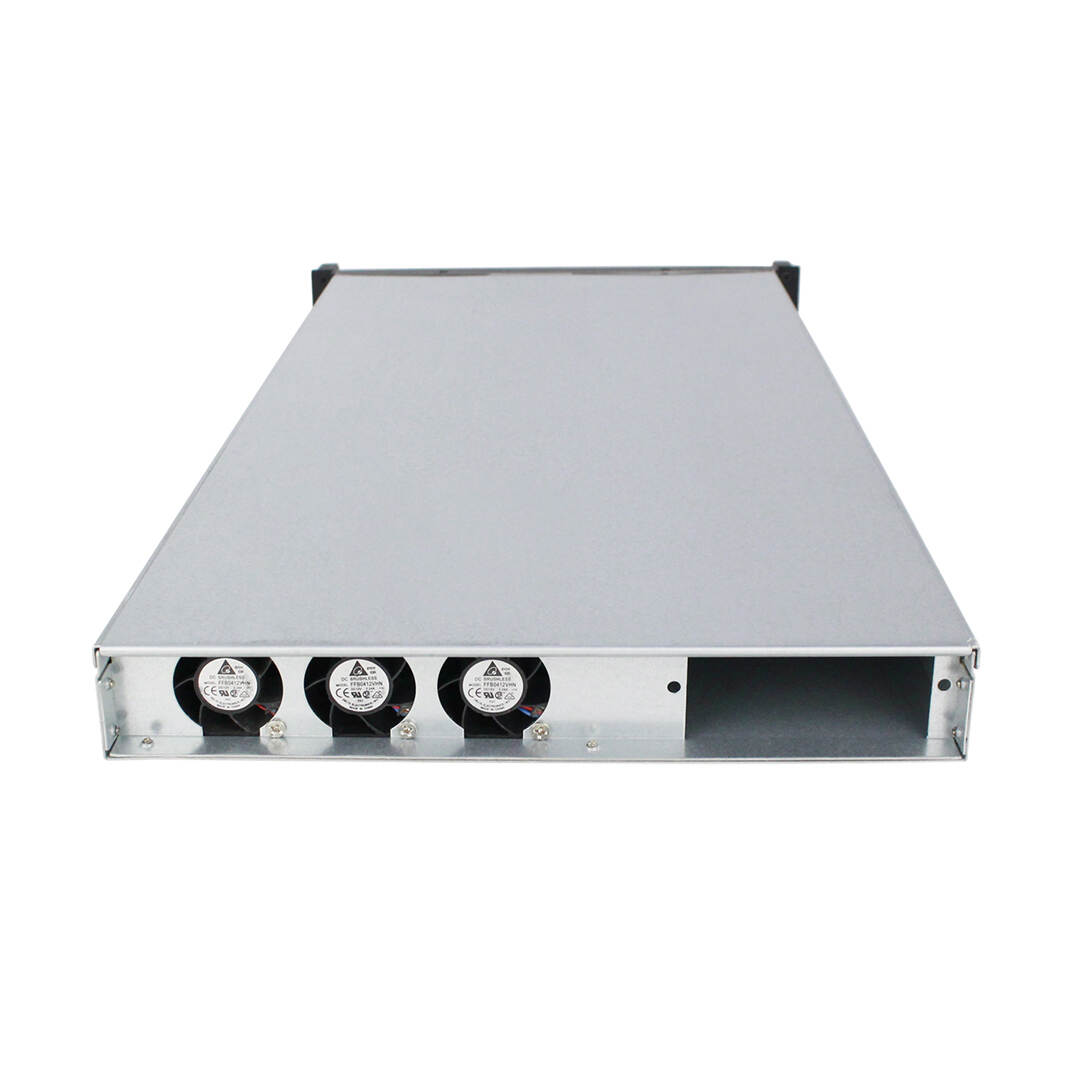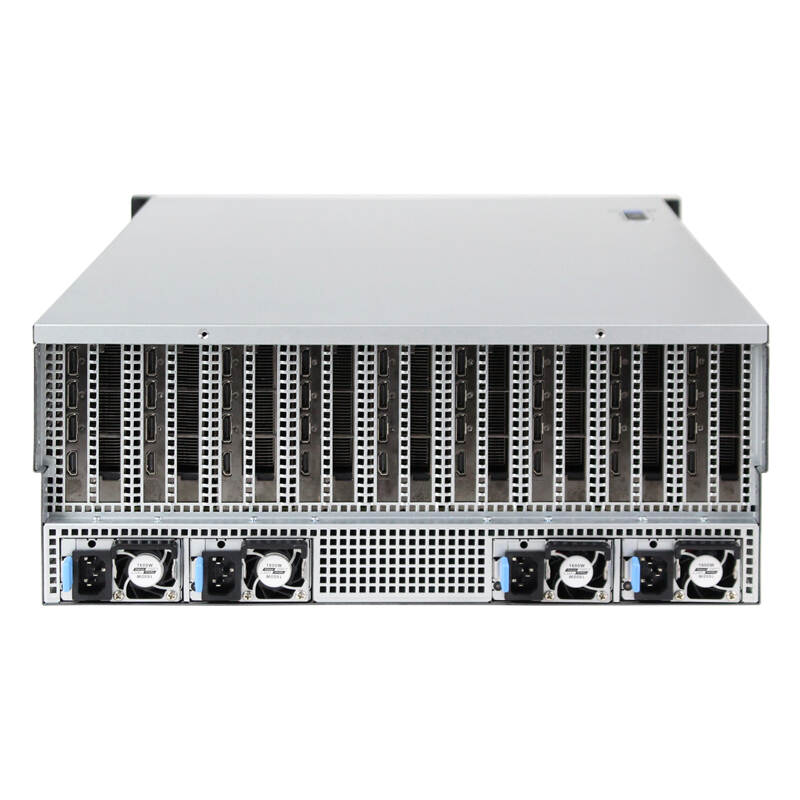Blade Server vs. Rack Server: Unraveling the Distinctions
July 08,2023
In the realm of server infrastructure, two popular options that often come up in discussions are blade servers and rack servers. These terms can be confusing for those new to the field, but understanding the differences between them is crucial for making informed decisions. In this blog post, we will delve into the dissimilarities between blade servers and rack servers, shedding light on their respective functionalities, benefits, and considerations.
What is Blade Servers?
Blade servers are a compact and modular form of server infrastructure. They are designed to fit into a chassis, which acts as a centralized enclosure for multiple blade servers. Each blade server is a self-contained unit that includes processors, memory, storage, and networking capabilities. These blade servers are hot-swappable, meaning they can be easily inserted or removed from the chassis without disrupting the operation of other blades.

Advantages of Blade Server?
1. High Density: Blade servers are designed to maximize server density within a limited space. By consolidating multiple servers into a single chassis, organizations can significantly reduce the physical footprint required for their server infrastructure. This is particularly beneficial for data centers or environments with limited rack space.
2. Simplified Management: Blade servers streamline management by centralizing power, cooling, and networking within the chassis. This reduces cable clutter and simplifies the overall infrastructure. Administrators can easily manage and monitor multiple blade servers from a single management interface, saving time and effort.
3. Scalability: Blade servers offer excellent scalability options. As the organization’s needs grow, additional blade servers can be easily added to the existing chassis. This modular approach allows for seamless expansion without the need for additional rack space or complex cabling. It provides a flexible and cost-effective solution for organizations with evolving requirements.
4. Long-term Cost Savings: While blade servers may have a higher upfront cost due to the need for a chassis and specialized infrastructure, they can provide long-term cost savings. Blade servers are designed for energy efficiency, with shared power supplies and cooling systems within the chassis. This results in reduced power consumption and lower energy costs compared to traditional rack servers.
5. Improved Cooling Efficiency: Blade servers incorporate advanced cooling technologies to efficiently dissipate heat generated by the servers. The centralized cooling system within the chassis ensures uniform cooling across all blade servers, reducing the risk of overheating and improving overall system reliability.
6. Simplified Cable Management: Blade servers significantly reduce cable clutter compared to traditional rack servers. With shared power and networking infrastructure within the chassis, there are fewer cables to manage. This not only improves airflow and cooling but also simplifies troubleshooting and maintenance tasks.
7. High Availability and Redundancy: Blade servers often come with built-in redundancy features. Redundant power supplies, cooling fans, and networking modules ensure high availability and minimize the risk of downtime. In the event of a component failure, the system can automatically switch to redundant components without interrupting the operation of other blade servers.
8. Centralized Storage and Networking: Blade servers often include integrated storage and networking options within the chassis. This eliminates the need for separate storage or networking devices, further reducing the overall infrastructure complexity and cost.
What is Rack Servers?
Rack servers, on the other hand, are standalone servers that are mounted on racks. These servers are typically larger in size compared to blade servers and are designed to be installed individually. Rack servers come in various form factors, such as 1U, 2U, or 4U, indicating their height in rack units.

Advantages of Rack Server?
1. Flexibility and Customization: Rack servers provide flexibility in terms of hardware customization. Organizations can choose servers with specific hardware configurations to meet their unique requirements. This includes options for processors, memory, storage, and expansion slots. This flexibility allows organizations to tailor their server infrastructure to their specific needs and workloads.
2. Scalability: Rack servers offer easy scalability. Organizations can add or remove individual servers as needed, without affecting the operation of other servers. This scalability allows organizations to adapt to changing demands and expand their server capacity as their business grows.
3. Easy Maintenance and Upgrades: Rack servers provide easy access to individual servers for maintenance or upgrades. Since each server is standalone, it can be easily removed from the rack without disrupting the operation of other servers. This makes it convenient for organizations to perform hardware upgrades, replace faulty components, or perform routine maintenance tasks.
4. Connectivity Options: Rack servers offer a wide range of connectivity options. They typically come with multiple network interface ports, allowing for high-speed data transfer and connectivity to the network infrastructure. Additionally, they often have expansion slots for adding additional network cards or other peripherals, providing flexibility for organizations with specific connectivity requirements.
5. Cost-Effective: Rack servers generally have a lower initial cost compared to blade servers. Since they do not require a specialized chassis or infrastructure, the upfront investment is typically lower. This makes rack servers a cost-effective option, especially for organizations with budget constraints or those looking for a more affordable server solution.
6. Compatibility: Rack servers are widely used and have established compatibility with various software and hardware components. This compatibility ensures seamless integration with existing infrastructure and software applications, reducing the risk of compatibility issues and simplifying the deployment process.
7. Versatility: Rack servers can be used in a variety of environments and applications. They are suitable for small businesses, medium-sized enterprises, and large data centers. Whether it’s for hosting websites, running applications, managing databases, or storing files, rack servers can handle a wide range of tasks and workloads.
8. Vendor Support: Rack servers are offered by numerous vendors, providing a wide range of options and support. This allows organizations to choose from different vendors based on their specific requirements, budget, and preferred support services. The availability of vendor support ensures that organizations can receive assistance and maintenance services when needed.
4 Factors Should Be Considered?
1. Density and Scalability
Blade servers excel in terms of density, allowing organizations to maximize their server capacity within a limited space. On the other hand, rack servers offer more flexibility in terms of scalability, as they can be easily added or removed individually based on the organization’s needs.
2. Management and Maintenance
Blade servers simplify management and maintenance by centralizing power, cooling, and networking within the chassis. This reduces cable clutter and streamlines operations. Rack servers, while requiring more individual management, offer easier access to individual servers for maintenance or upgrades.
3. Power and Cooling
Blade servers share power supplies and cooling systems within the chassis, which can lead to more efficient use of resources. Rack servers, on the other hand, have dedicated power supplies and cooling mechanisms for each individual server, allowing for more granular control and customization.
4. Cost Considerations
Blade servers typically have a higher upfront cost due to the need for a chassis and specialized infrastructure. However, they can provide long-term cost savings through reduced power consumption and simplified management. Rack servers have a lower initial cost and offer more flexibility in terms of hardware customization.
Conclusion
Understanding the distinctions between blade servers and rack servers is essential for organizations when planning their server infrastructure. Blade servers offer high density, simplified management, and reduced cabling, making them suitable for environments with limited space. Rack servers provide flexibility, scalability, and customization options, making them ideal for organizations with evolving needs. By considering the specific requirements and constraints, organizations can make informed decisions and optimize their server infrastructure for optimal performance and efficiency.